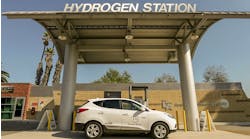Green cleaning programs are becoming increasingly common at schools and universities, and in many states they have become the law. Whether driven by legislation or efforts to meet the requirements of LEED-EBOM, involvement with the Green Cleaning Network or the Healthy Schools Campaign, or simply because green cleaning has become a "best practice," it just makes sense.
After all, it is smart to use any program that has minimal downside. Green cleaning products and processes are widely available and can reduce health risks to custodians, students and staff. Green cleaning programs are cost-neutral and can even save money compared with traditional cleaning products and processes.
However, the challenge for many schools and universities is how to keep improving a program. A commitment to continual improvement is important because of budgetary pressures and because the cleaning industry is rapidly developing greener technologies that could enhance an established program.
One excellent benchmarking opportunity is the Green Cleaning Award for Schools & Universities, which is sponsored by AS&U magazine in partnership with the Green Cleaning Network and the Healthy Schools Campaign. This program recognizes the best of the best and promotes "lessons learned" to help others get started or improve their programs.
The Green Cleaning Award is built around the Quick & Easy Guide to Green Cleaning in Schools. Developed by the Healthy Schools Campaign, it identifies best practices in green cleaning products, processes, training and communications. The free guide and the award application process provide a good way to benchmark cleaning practices, identify opportunities for improvement, and plan a path forward regardless of how new or advanced the cleaning program.
The awards application itself requires only a written summary, and an easy-to-use template for products including chemicals, equipment, supplies, janitorial paper and plastic liners.
One approach is to ask the cleaning product supplier to fill out the application and while they are at it, conduct a comprehensive audit (which is outlined in the Quick & Easy Guide), and identify and recommend potential improvements.
New developments in green cleaning include the growing availability of chemicals made from bio-based ingredients; the advance of chemical-free cleaning using electrolyzed and ionized water for general cleaning applications, as well as in floor scrubbers and carpet extractors; buffing pads for powered equipment that eliminate floor-stripping chemicals, and others that eliminate coatings and impregnators from terrazzo and marble floors; improved paper quality that reduces product consumption, as well as paper from rapidly renewable fibers and sustainably managed forests; vapor, steam and hands-free cleaning equipment that reduces water consumption; electric hand dryers that capture water droplets; improved microfiber mopping systems; more durable tools and equipment; machines with improved ergonomics; and monitoring devices that measure cleanliness.
As a result, the real value of the application process is as an annual benchmarking of the cleaning program and to aid in the process of continual improvement. And the lessons learned will help others as well. Applications must be submitted by Sept. 10 and can be found online at asumag.com/green_cleaning_award.
Ashkin is executive director of the Green Cleaning Network, a 501(c)3 not-for-profit educational organization. [email protected]



